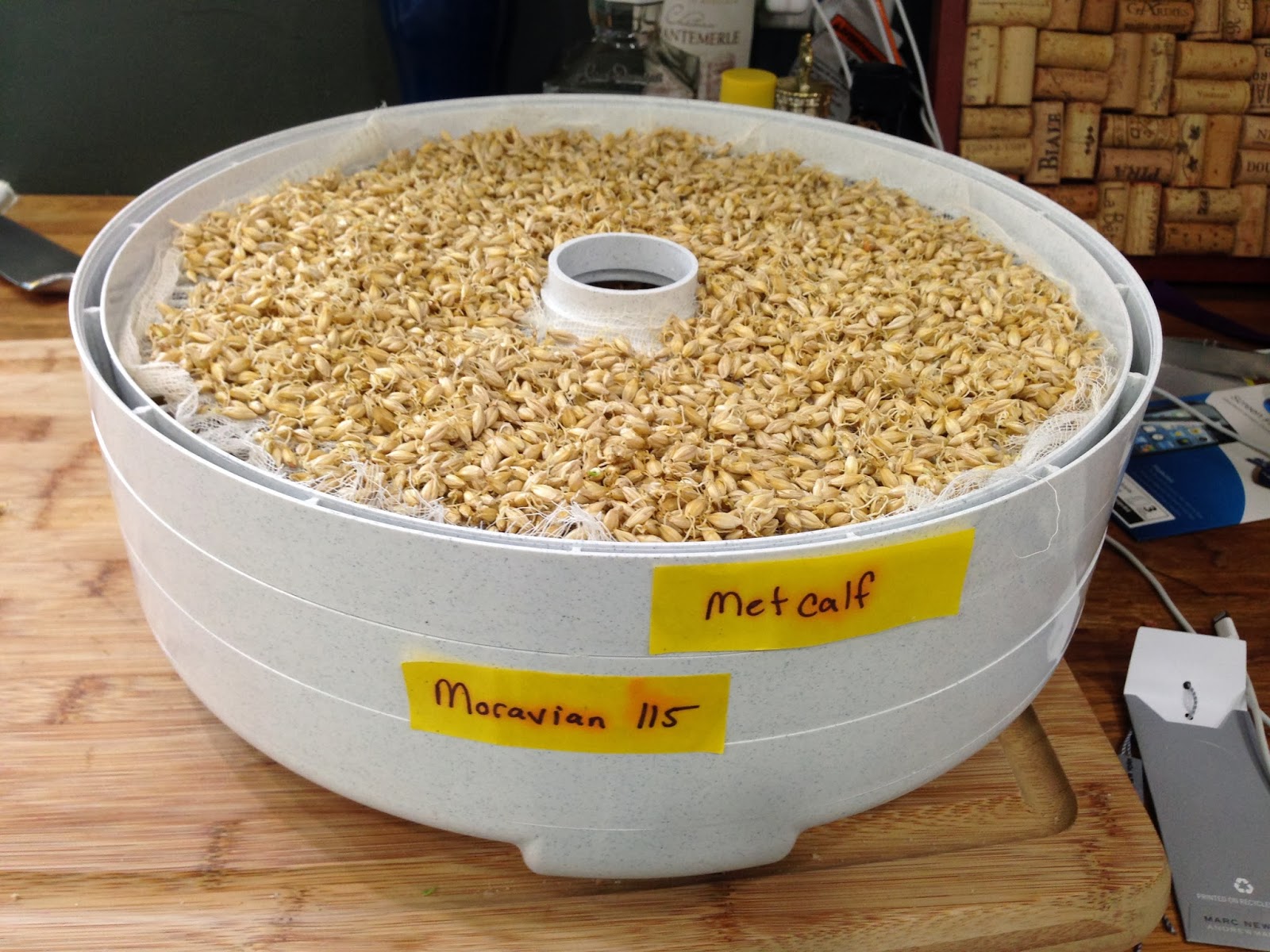My husband asked me when I was planning to malt another batch of barley. I'm anxious to go through the process again with some modifications. Before I do another batch, I want to buy a barley moisture tester. The cost on these can run from a few hundred to thousands of dollar$$$. I've been keeping an eye out online for a used one that won't break the bank.
In the meantime, I'm preparing to replace my raised vegetable gardens with barley. We've had an unusually hot winter making it less than ideal to plant at this time. Barley germinates best in cool weather so I'm not planning to put down any seed until the weather cools down, hopefully in mid-to-late February which is our wettest month, then allow it to grow through our "gray" cool spring months (April, May and June here in San Diego). Yes, I know I'm sitting here in a t-shirt and flip-flops complaining about 80ºF weather in January! I figure at least others can live vicariously through the picture below.
San Diego is arguably the top spot for craft brewing in the USA, maybe the world. My husband is currently in the professional brewing program at UCSD. I was looking for a way I could contribute to this industry and support my husbands passion for craft brewing. Gardening and malting was the answer! What follows in this blog is an accounting of my efforts to become a Maltster with plans to plant two-row barley in the spring and malt my yield!
Barley Field

Monday, January 20, 2014
Monday, January 13, 2014
We have Amber Malt!
It's been an interesting process but I have officially malted my first batch of barley.

The roasted malt will settle its flavor in the next two weeks.
After spending too much time in the dehydrator I removed the rootlets.

At this stage I now have my basic pale malt and it tastes slightly sweet. However, I decided I wanted to do a specialty malt and roasted the malt to create an Amber malt. Below you can see the color difference between the pale malt (left) and the Amber malt I roasted (right).
There are several things I will do differently in my next batch. I'm also looking into buying something to help me determine the moisture content of barley. I found that much of the process centers around moisture and you can't rely solely on average times for steeping, germination, and kilning. The average times for each part of the process can very greatly depending on many factors including amount of grain being malted, moisture content, etc.
Thursday, January 9, 2014
Time to kiln...finally!
So...germination had a few hiccups but I'm finally at the point of being ready to kiln. The acrospire is about three-quarters the length of the grain and there are about four rootlets on the barley grain.
Germination took twice as long as expected. I have a few theories about this, the most likely being that it got too dry. I did rotate and spray the barley down every day with water, but the climate here is very dry and it was hard to keep on top of maintaining a consistent moisture level...thinking of investing in a humidifier for the cold room I used for germination. I'm still optimistic as I've read that the slower the germination the better and it can take longer than the 5ish days on average Maltsters typically quote for germination.
Needless to say, this is an experiment and I'm learning. Luckily the barley didn't die and I'm ready to kiln!!
Germination took twice as long as expected. I have a few theories about this, the most likely being that it got too dry. I did rotate and spray the barley down every day with water, but the climate here is very dry and it was hard to keep on top of maintaining a consistent moisture level...thinking of investing in a humidifier for the cold room I used for germination. I'm still optimistic as I've read that the slower the germination the better and it can take longer than the 5ish days on average Maltsters typically quote for germination.
Needless to say, this is an experiment and I'm learning. Luckily the barley didn't die and I'm ready to kiln!!
I will be kilning at 100°F for about 22-24 hours. I will then increase the temperature to 150°F for 2-4 hours until the moisture of the barley is as close to 3% as I can get (anything less than 6% should be fine from what I've read). Once I've reached 3-6% moisture level I will remove the dried rootlets and roast for about 30 minutes at 350°F to produce an Amber malt.
Subscribe to:
Comments (Atom)


